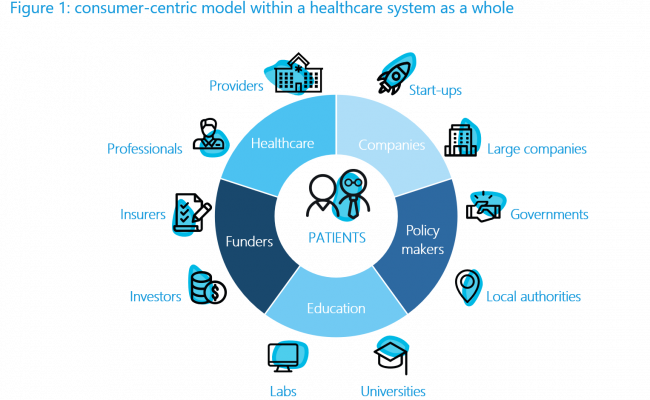COVID-19 accelerated the digitalization of healthcare and the adoption of telehealth globally. Amidst global lockdown and quarantine measures, access to telehealth is increasingly crucial.
Eurogroup Consulting Italy and its international network, Nextcontinent, have analysed the impact of Covid-19 on the development of telehealth. This white paper takes stock of the level of maturity of the various countries in terms of telehealth. The analysis of these cases allows to formulate recommendations for the success of telemedicine deployment projects.
KEY COMPONENTS OF A COMPREHENSIVE TELEHEALTH SERVICE
The World Health Organization (WHO) defines telehealth as the delivery of healthcare services, where patients and providers are separated by distance. Telehealth uses ICT for the exchange of information for the diagnosis and treatment of diseases and injuries, research, and evaluation, and for the continuing education of health professionals. Telehealth can contribute to achieving universal health coverage by improving access for patients to quality, cost-effective health services wherever they may be. It is particularly valuable for those in remote areas, vulnerable groups and aging populations.
Nextcontinent believes the following approaches are key components of a comprehensive telehealth service:
Live, synchronous, interactive encounters between a patient and a healthcare provider via video, telephone, or live chat.
Identification of the illness and the patient’s health condition by the healthcare provider via the use of ICT including wireless devices, wearable sensors, and mobile apps. Asynchronous diagnosis by a specialist using store and forward ICT is included.
Prescription of a treatment remotely by the physician, via the use of ICT following telehealth diagnosis without clinical examination to the patient or upon telehealth prescription of treatment based on diagnosis conducted through the traditional clinical way.
Any telehealth intervention via the use of ICT.
Also known as remote patient monitoring, is the collection, transmission, evaluation and communication of individual health data and vital signs, from a patient to the healthcare provider or extended care team from outside a hospital or clinical office (i.e., the patient’s home) via the use of ICT including wireless devices, wearable sensors, implanted health monitors, and mobile apps.
TELEHEALTH MATURITY LEVELS ACROSS THE WORLD
Maturity levels vary among countries in terms of implemented initiatives, regulation, and integration of the ICT within the value chain of the healthcare system.
The United States has seen the most rapid growth of telehealth. With the rapid rollout of telehealth in response to the pandemic, laws on its coverage and reimbursement are rapidly changing.
In Europe, the lack of legal harmonization and clarity remains one of the biggest challenges to telehealth adoption. Neverthelss, European countries have rapidly deployed solutions during the pandemic.
The different maturity levels in telehealth across the world serve as clear evidence that there are still barriers to full adoption in the delivery of care, namely, the lack of harmonized regulation and integration of stakeholders within the healthcare system. On the other hand, the COVID-19 pandemic has broken through previously challenging provider and patient adoption barriers. Both providers and healthcare consumers that utilized telehealth in the last year fully anticipate utilizing it as a channel of care going forward.
Healthcare players need to move now to support such a shift and pivot to longer term strategies to improve their future position
A COMPLEX PROCESS THAT REQUIRES ALL STAKEHOLDERS TO PLAY A ROLE
The ongoing integration success of telehealth depends on all stakeholders involved in the healthcare system (as represented on figure 1) and a cultural shift that focuses on the patient (consumer-centric orientation) to improve both the health of the individual and the healthcare system in general.

We support our clients in assessing their current stage of telehealth and drive future-stage design and develop a sustainable telehealth growth strategy, integrating our own experience and point of view with specialized opinions and market trends.
The maturity model designed by Nextcontinent’s citizens outlines a sustainable, long-term telehealth growth strategy for the future that gives companies visibility into how their investments are shaping plans and where their funding and efforts must be focused to move forward along the maturity model.
For further information, please contact:
Angelo CENTRONE
a.centrone@eurogroupconsulting.it
Luigi MARESCA
l.maresca@eurogroupconsulting.it
Riccardo LAURENZA
r.laurenza@eurogroupconsulting.it
Flavia GHISONI
f.ghisoni@eurogroupconsulting.it
Laura SCIACCHITANO


